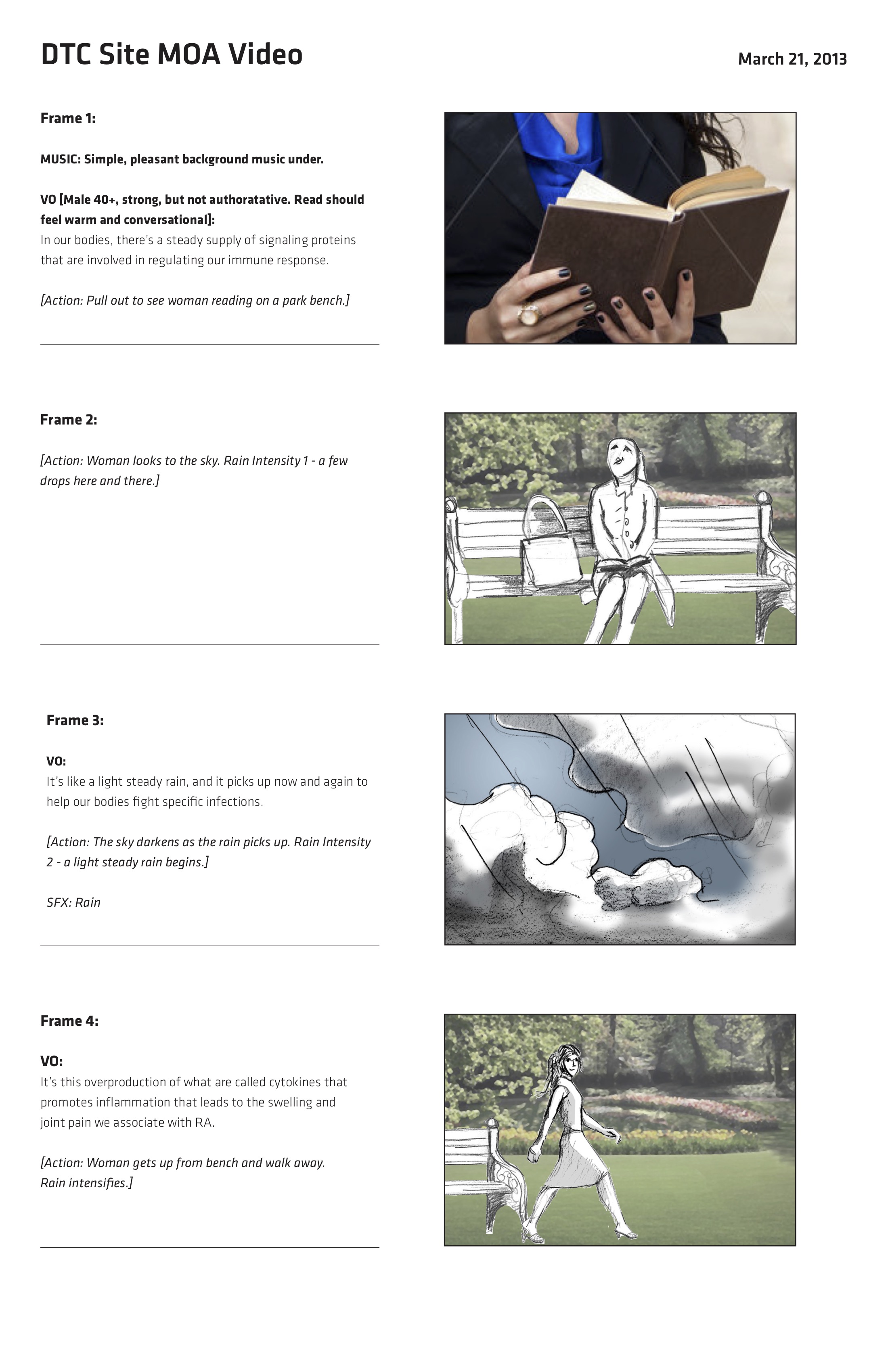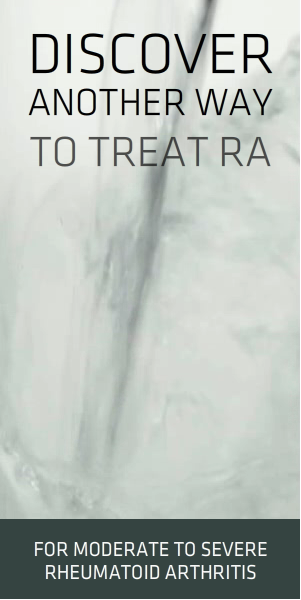Problem #1 - Make a very scientific topic understandable to everyone.
Method of action, or "MOA", is the term for the science behind how/why a drug works. Typically these explanations in their purest forms are scientific gobbledygook to the average person. So, the problem my copy-partner and I solved on this project was how to make an extremely "science-y" topic easily and quickly understandable for the general public. We created an analogy that everyone can related to, rain.
Problem #2 - Overcome your clients' preconceptions.
From the start we could tell what the client "thought" they wanted. We were even directed to reuse an :06 second video asset created for the TV campaign. Easy-peasy… or so they thought. No one really expected much out of this project. If we delivered that way the results would either be incredibly lack-luster, not do its job very well (see Problem #1), or BOTH. We fought to over-deliver.
Problem #3 - Make something out of nothing, with very little money.
We had a great idea that we needed to bring to life. Thanks to the Project Management and Account teams, we found the money to do more than what was initially budgeted. Live action or full motion animation was not going to happen for both budget and timing reasons, but a limited motion animatic could be done. We developed a look and feel that could be brought to life.
I am pleased with the final piece as it solves some pretty difficult problems, communicates the ideas that it should, and delivered more than it was expected.
Update: Storyboard samples
As with most video productions, a precise storyboard needs to be created to direct the action scene-by-scene. Using a mixture of stock art and quick drawings, here is what I produced for this project.














